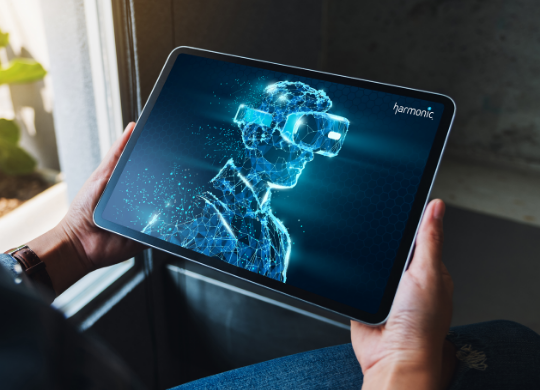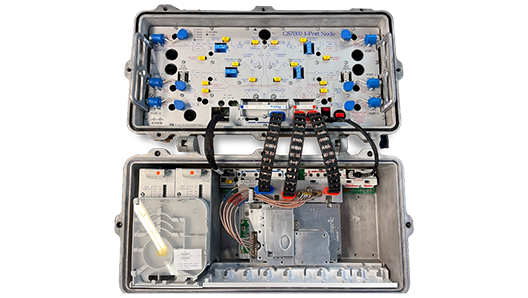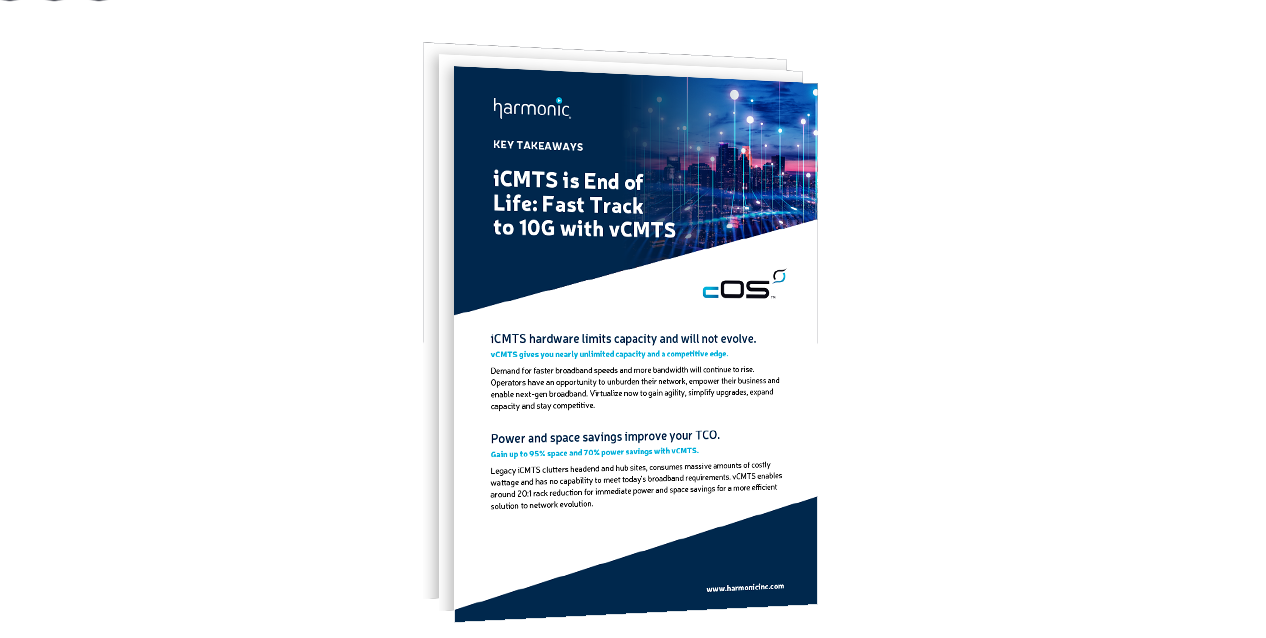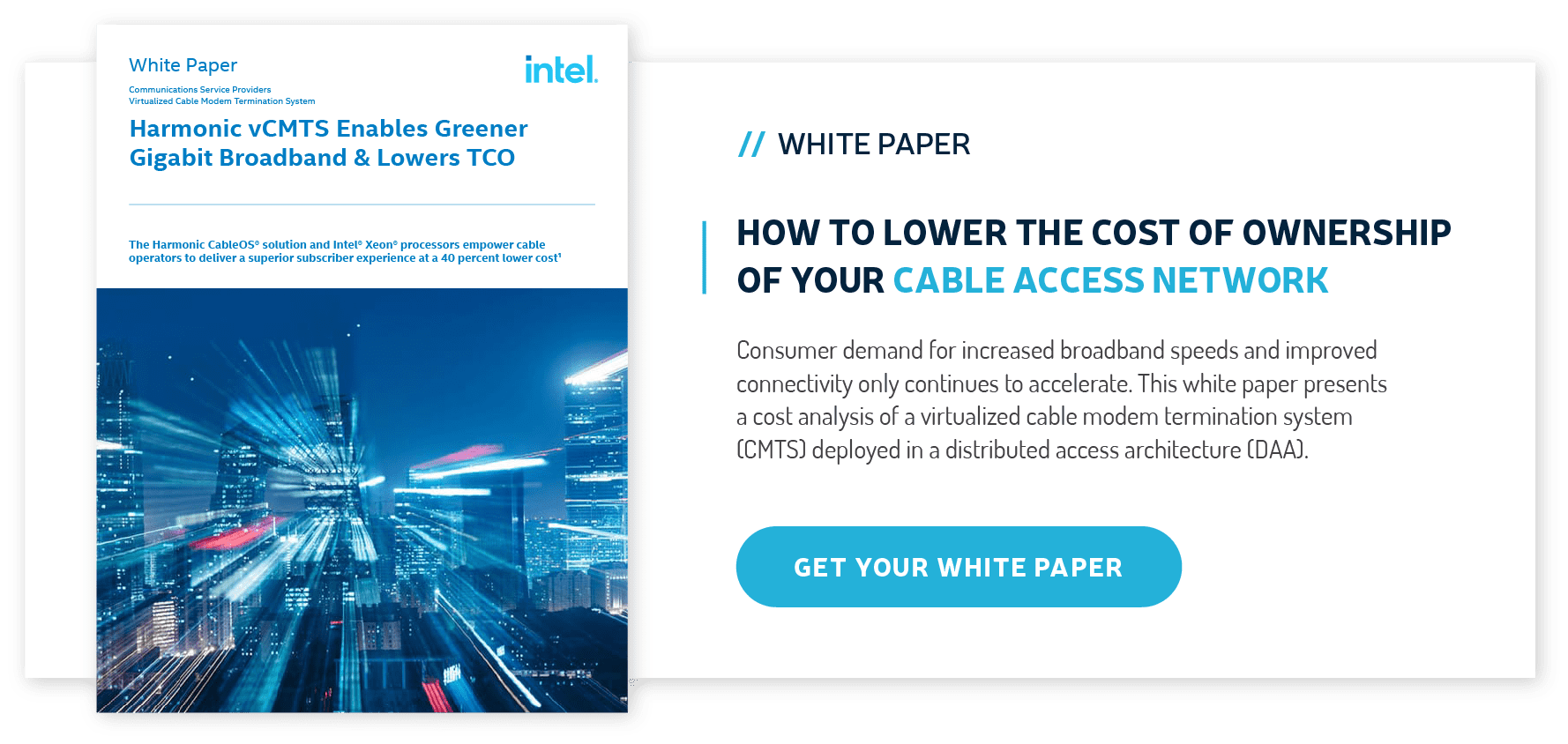Cable operators have traditionally relied on purpose-built hardware solutions such as integrated CCAP devices to deliver services. However, as bandwidth consumption grows exponentially, these solutions are showing their limitations. This is because capacity increases often lead to additional equipment and associated OPEX in crowded headends and hubs. Development cycles for new services and features in this traditional context are often long and require significant and time consuming regression testing.
Cable operators need better solutions to compete in a market where customer expectations are high. Now more than ever modernization is key. Many are turning to virtualized, software-based infrastructures to adapt to customer demand and compete.
What is virtualization?
At its most basic, virtualization is about creating a virtual (software) instance of an application or a solution, which can run on a generic server rather than specialized hardware. This enables the application to benefit from the flexibility and agility that are inherent to the software.
What is cloud-native virtualization?
Creating a software version of a hardware-based solution, without addressing the underlying software architecture, limits the benefits of virtualization. If the solution is just instantiated as software running on virtual machines (VM)s, it may not exploit all the advantages of the cloud computing model and it may also be saddled with overhead. For example, VMs needing a hypervisor for monitoring. Truly cloud-native virtualization leads to agility, velocity, and cost-efficiency. Cloud-native software inherently follows these principles:
- Microservices: are loosely coupled services that deliver separate capabilities. They can be deployed, upgraded, tested, and maintained independently from other microservices. This makes it possible to quickly update single or multiple functionalities without impacting the overall system.
- Containerization: microservices are typically deployed in containers. Each container is a virtual runtime environment with its own operating system (OS) instance. Containers can be deployed on bare-metal or on VMs.
- Lightweight API: enable communication among services for interaction and collaboration.
- Continuous Integration and Continuous Delivery (CI/CD): the dynamically orchestrated microservices enable the operator to continuously update each separate microservice in the solution, test new capabilities, and deploy them seamlessly.
- Dynamic orchestration: Kubernetes (k8s) is an open-source system that automates deployment, scaling, and the management of the containerized applications, in comparison with a person manually configuring specific applications with hard-coded server resources (e.g. CPU, memory). Kubernetes schedules each application container across a cluster, or set of servers, in the cloud-native platform. A pod encapsulates an individual application composed of multiple co-located containers that are tightly coupled and share resources. The value is that different types of pods or applications can be turned on by Kubernetes elastically without human interaction.
Virtualizing the cable access
Virtualized cable access enables you to adopt feature velocity, elastically scale capacity with demand, and deliver a superior customer experience. There several other benefits that will help your broadband business thrive. Let's review what the virtualized cable access network looks like.
- The virtual CMTS: The vCMTS is a virtualized software version of the hardware-based CMTS. It runs on a cluster of Common Off the Shelf (COTS) servers, such as 1-RU Intel x86, which are not bound to a single chassis. The vCMTS should perform all CMTS functions including common control, and management and forwarding of IP traffic across the network. It should also be able to support all DOCSIS-related applications, such as DSG and PacketCable, IPv4, and IPv6 services. The vCMTS is scaled simply by spinning up new vCMTS containers on available COTS servers. It can simply be deployed in a centralized or Distributed Access Architecture (DAA), or a hybrid of both as you transition the network overtime.
- The virtual video core: The virtual video core is a critical part of any virtualized cable access solution. Where CCAP was converging video and data services in a single hardware-based entity, virtualization is splitting that up into logical, virtual entities. Virtualizing the CMTS without a virtual video core dismisses many of the benefits of transitioning to a virtual cable access architecture.
- The remote PHY device or shelf: The virtualization of the CMTS is possible because the physical layer (PHY) is removed from the CMTS to either a remote PHY Device (RPD) housed in the access node, or to a remote PHY Shelf located in either the headend, hub or another location. Service partner unique implementations driven by innovation and an understanding of market requirements will show a difference in RPD power consumption and telemetry capabilities. After all, what use is an RPD if it's not able to work with existing hybrid fiber-coaxial (HFC) management tools used by cable operators or if the power consumption is prohibitive to deployment in HFC networks.
- The COTS switch: The switch serves as the network fabric that manages all L2 or L3 northbound traffic. It should enable 1+1 High Availability and be expandable to support incremental 10G links to RPDs, as well as 100G links to the edge router or backbone network.
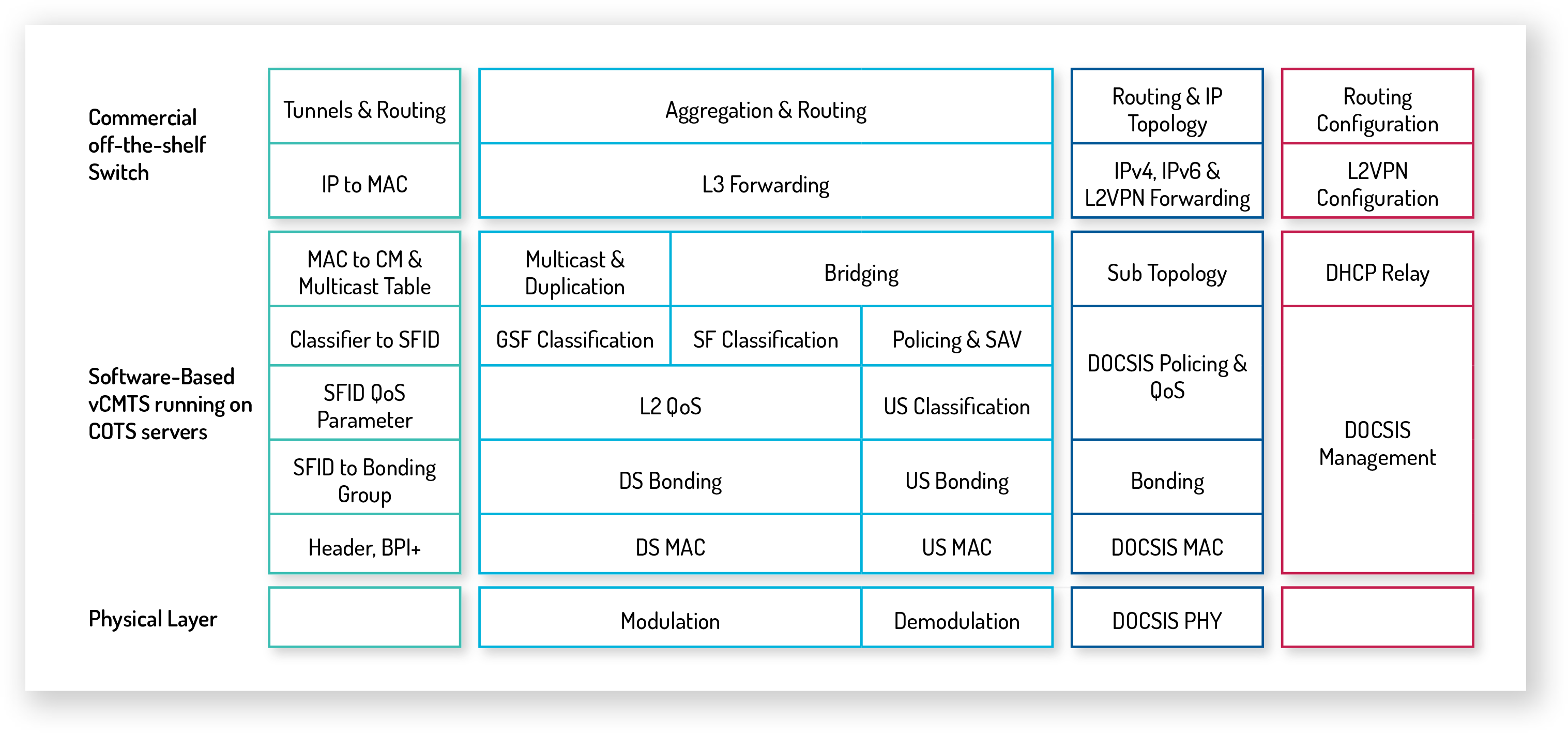
Disaggregation for the CMTS
Benefits of the virtualized cable access
- Connectivity and smart systems: Virtualized access networks leverage interconnectivity to gather data from end-to-end. With precise, constant feedback from your access network, you can better manage, plan, and optimize the delivery of broadband services, and the quality of your customer's experience, which also reduces service calls. Your network operations teams have data-rich analytics to spend less time chasing ghost events in an endless search for the root cause. A smarter, connected cable access network solution like Harmonic's cOS™, is remotely configurable, so you can reduce truck rolls and spend more time on your core business activities with total confidence.
- Greener operations and massive energy savings: Greener and smarter broadband delivery fosters efficiency for your sustainable business growth. Traditional cable access Infrastructures designed around power-hungry, clunky hardware with dying development cycles are becoming obsolete. The virtualized cable access network inherently reduces rack space, and in turn eliminates most real-estate, cooling, cabling, and power requirements. With virtualization, you can significantly free your business from costly budget constraints and frustrating maintenance, especially as service partners start to rapidly phase-out these less-modern infrastructures.
- Feature velocity: You can benefit from smaller operating domains to enable A/B testing. You can then release new features to test with a smaller population without needing to carry out regression tests on the broader environment, maintaining network stability the whole time.
- Agile capacity expansion: You can add service groups and large numbers of subscribers, and perform node splits to increase bandwidth, without impacting uptime.
- Multi-dimensional scalability: Unlike the rigid hardware solution, with a vCMTS you can scale along the dimension that needs it, without having to scale the entire system.
- Remote PHY enablement : The vCMTS, like the cOS vCMTS software is agnostic to the form factor of the RPD. You can then increase the scale and efficiency of the access network to respond faster to change. You can start small and ramp up quickly while continuing to generate savings from edge to end.
- Agility in addressing scale up and out architectures: A virtualized cable access solution allows both centralized as de-centralized deployments using Remote PHY.
Changing the way we operate and manage cable access
A virtualized cable access solution sets the stage for a new shift in paradigm regarding how cable operators operate and manage cable access networks. Virtualization allows you to evolve and grow by leveraging new business models that have revolutionized the industry for the better. Continuous Integration and Development (CI/CD) processes will drive deployments and improvements, which means that the partnership between the cable access operator and the service partner will become even more important. As the technology evolves, so do the expectations of service, support, and quality.
Big data is coming to cable access networks. Harmonic developed the cOS platform solution to provide the level of interconnectivity and data-driven design needed to create significant value for your everyday operations. Turning the raw data into detailed analytics with easy-to-read reports will bring a new meaning to proactive network maintenance and management. The AI-based cOS platform solution creates a dynamic network that allows you to proactively respond to broadband subscribers' needs and network events reducing and avoiding network downtime. Your subscribers will never know an event that occurred, which greatly improves your customers' broadband experience.
Virtualization is your first step to the next generation of broadband networks. You can run greener more efficient operations, enjoy simpler management, and provide higher quality experiences for your broadband service customers. Harmonic is leading the industry for virtualized vCMTS and end-to-end remote PHY deployments and are field-proven experts in distributed access architectures. Our unrivaled support and services teams work side-by-side with operators of all sizes, everywhere in the world, and around the clock to empower cost-effective, and simply smarter broadband delivery. We are here to answer your questions and to provide support. Let us know how we can help.

